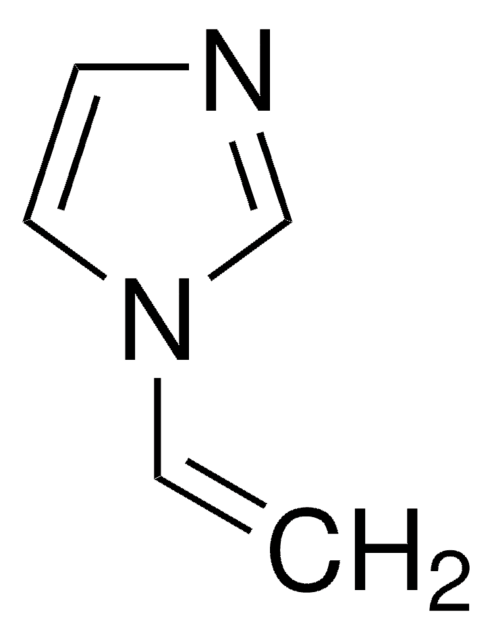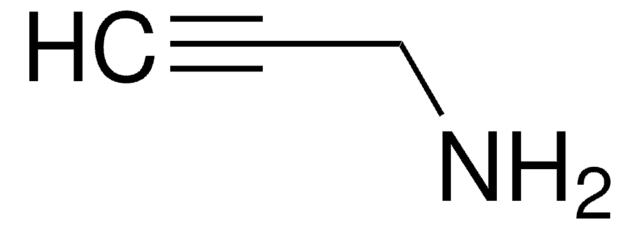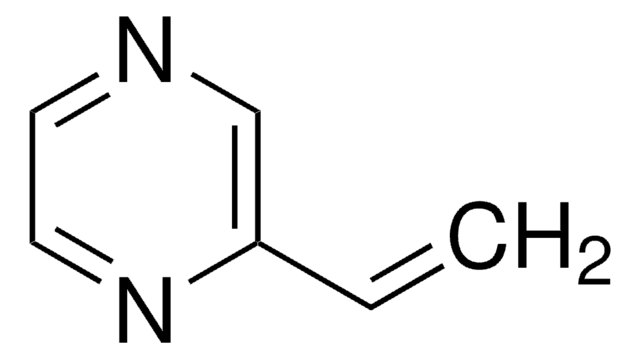447331
N-Vinylformamide
98%
Synonyme(s) :
N-Ethenylformamide, N-VFA, N-Vinyl-N-formylmethanamine
About This Item
Produits recommandés
Pression de vapeur
~0.1 mmHg ( 25 °C)
Niveau de qualité
Pureté
98%
Contient
25-55 ppm 4-Hydroxy-TEMPO as stabilizer
Indice de réfraction
n20/D 1.494 (lit.)
Point d'ébullition
210 °C (lit.)
Pf
−16 °C (lit.)
Densité
1.014 g/mL at 25 °C (lit.)
Température de stockage
2-8°C
Chaîne SMILES
[H]C(=O)NC=C
InChI
1S/C3H5NO/c1-2-4-3-5/h2-3H,1H2,(H,4,5)
Clé InChI
ZQXSMRAEXCEDJD-UHFFFAOYSA-N
Description générale
Application
- As a monomer to synthesize poly (N-vinylformamide) (PNVF) based hydrogels that can be used for controlled drug delivery.
- To synthesize an aqueous binder for Li4Ti5O12(LTO) anodes in lithium-ion batteries. This helps to enhance the stability and specific capacity of the electrodes.
- To fabricate biocompatible coating for medical devices.
- To fabricate polypropylene membranes for continuous removal of organic micropollutants from water. N-vinylformamide enhances the adsorption affinity of the membrane by inducing multiple hydrophilic and hydrogen bonding sites on the surface.
Mention d'avertissement
Danger
Mentions de danger
Conseils de prudence
Classification des risques
Acute Tox. 4 Oral - Carc. 2 - Eye Dam. 1 - Repr. 1B - Skin Irrit. 2 - STOT SE 3
Organes cibles
Respiratory system
Code de la classe de stockage
6.1C - Combustible acute toxic Cat.3 / toxic compounds or compounds which causing chronic effects
Classe de danger pour l'eau (WGK)
WGK 1
Point d'éclair (°F)
215.6 °F
Point d'éclair (°C)
102 °C
Faites votre choix parmi les versions les plus récentes :
Déjà en possession de ce produit ?
Retrouvez la documentation relative aux produits que vous avez récemment achetés dans la Bibliothèque de documents.
Les clients ont également consulté
Notre équipe de scientifiques dispose d'une expérience dans tous les secteurs de la recherche, notamment en sciences de la vie, science des matériaux, synthèse chimique, chromatographie, analyse et dans de nombreux autres domaines..
Contacter notre Service technique












